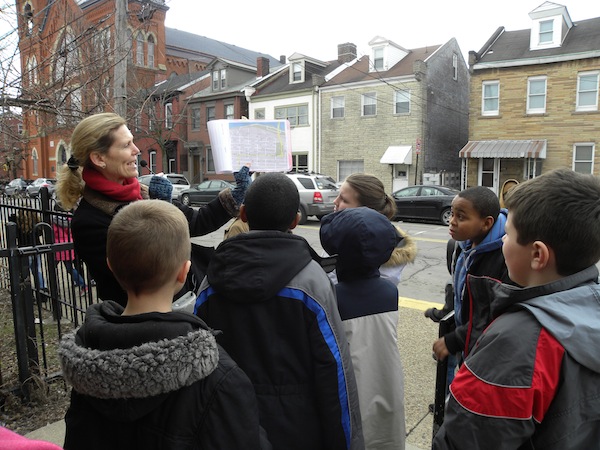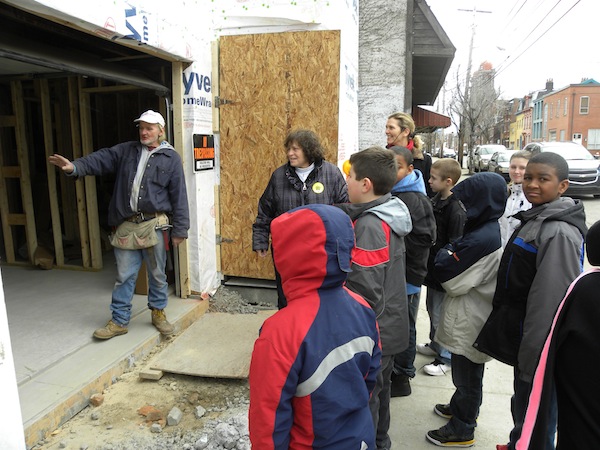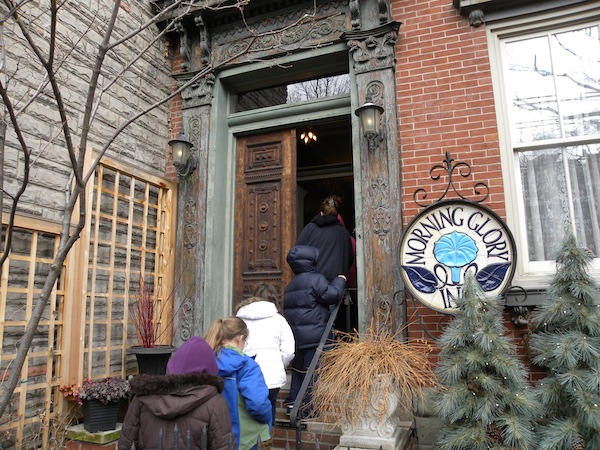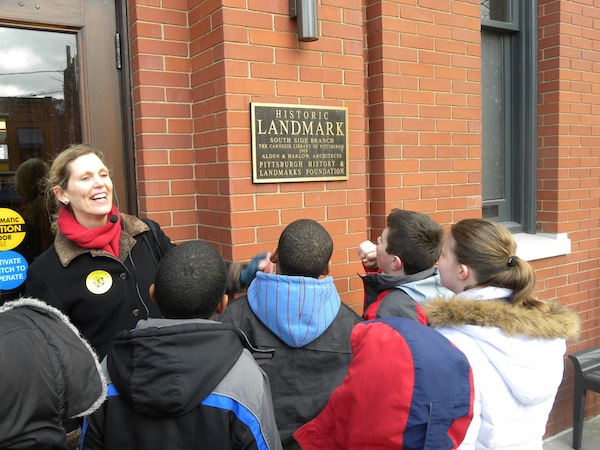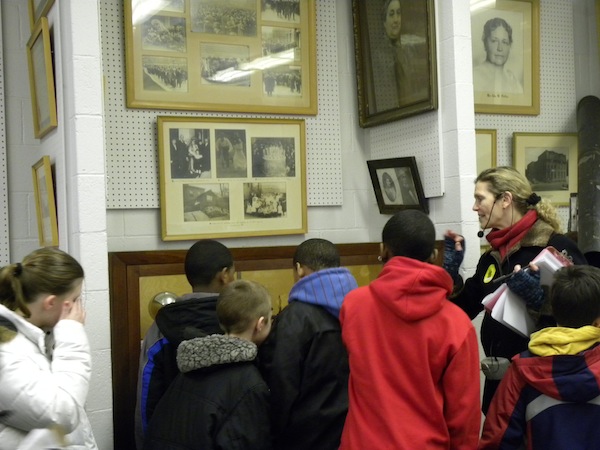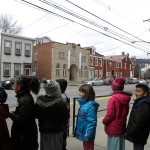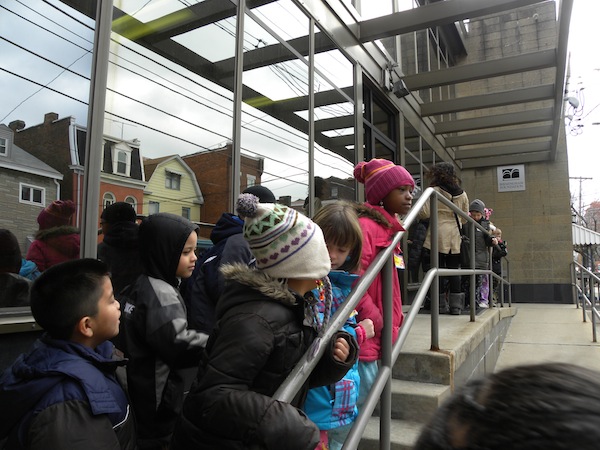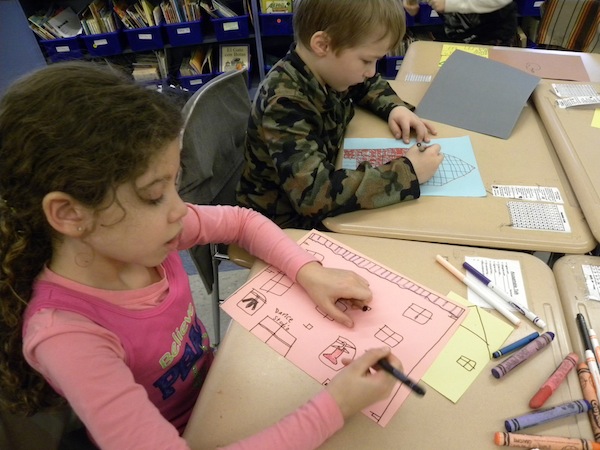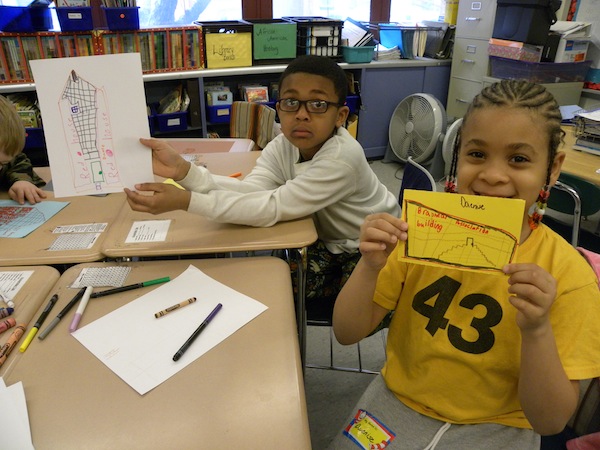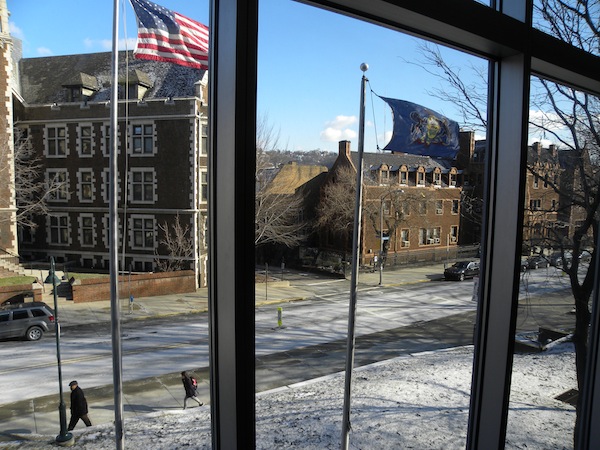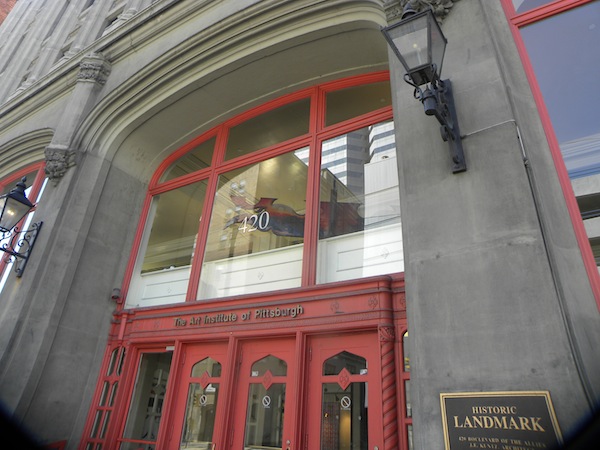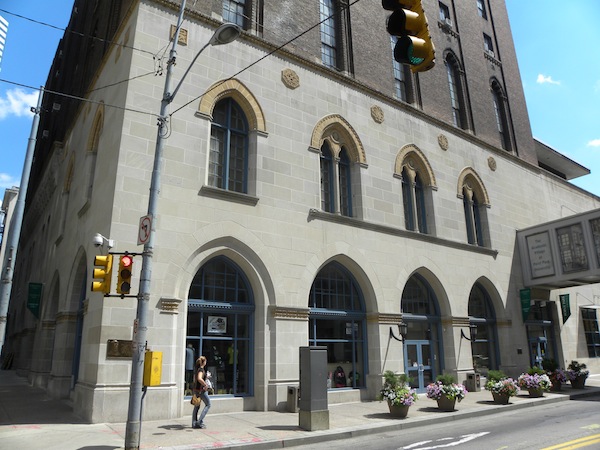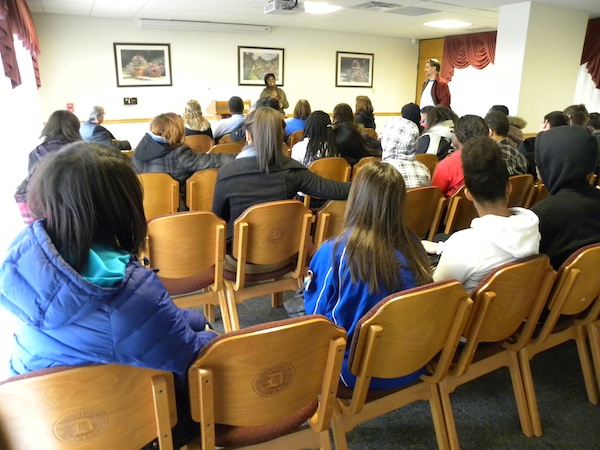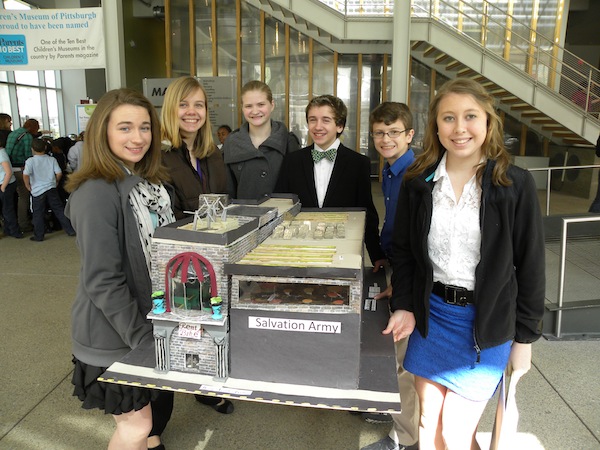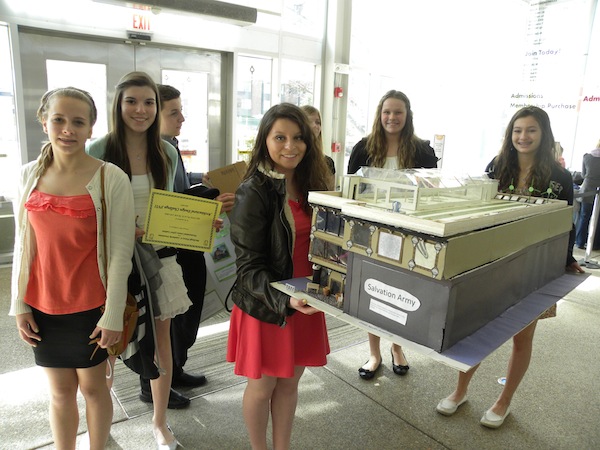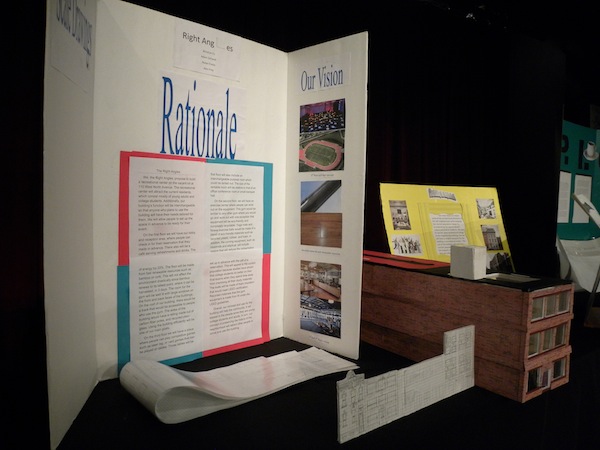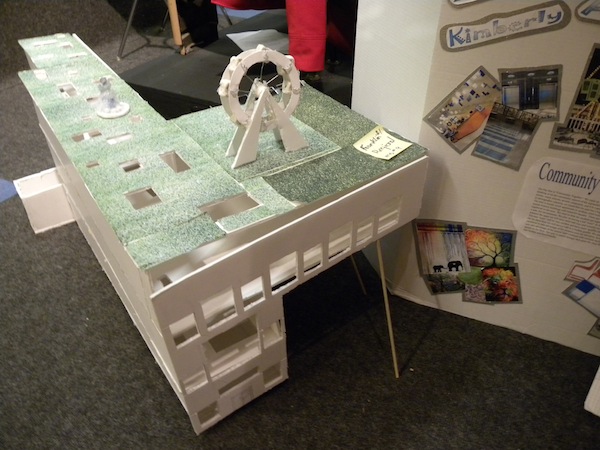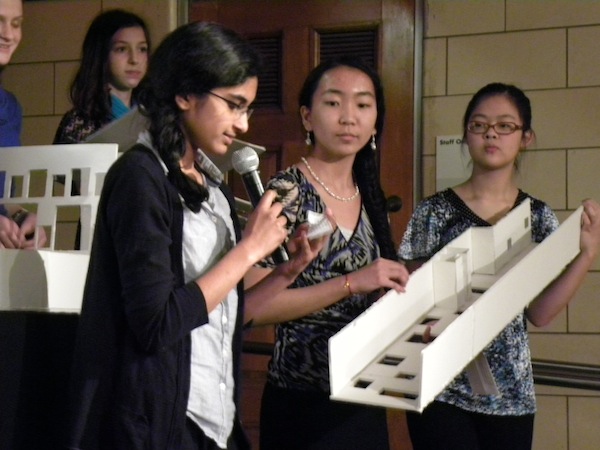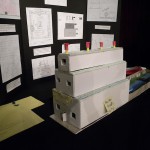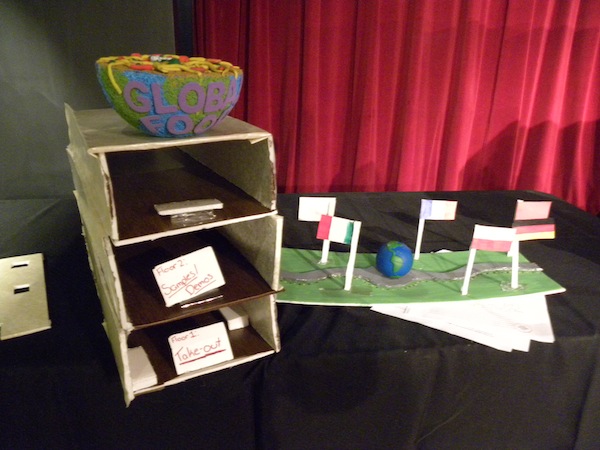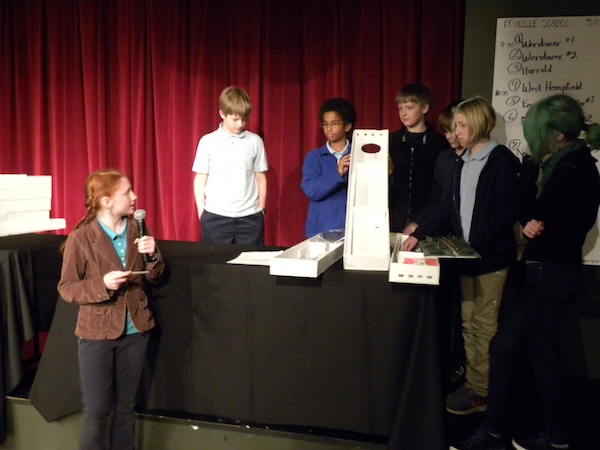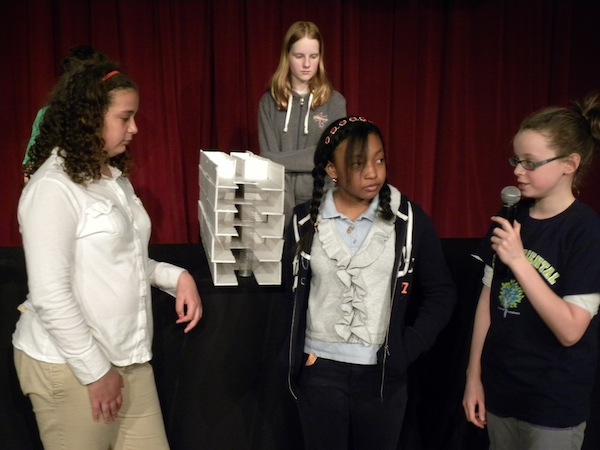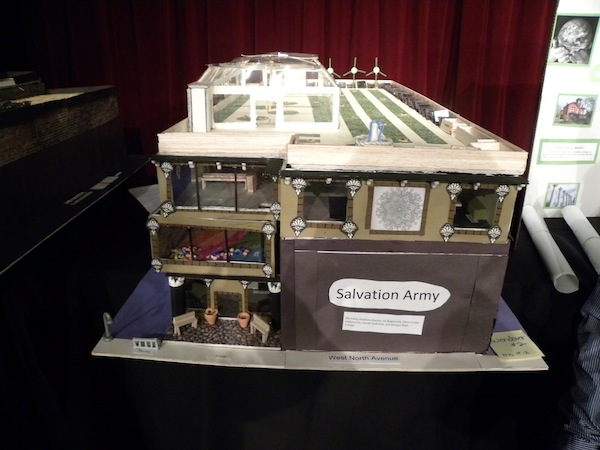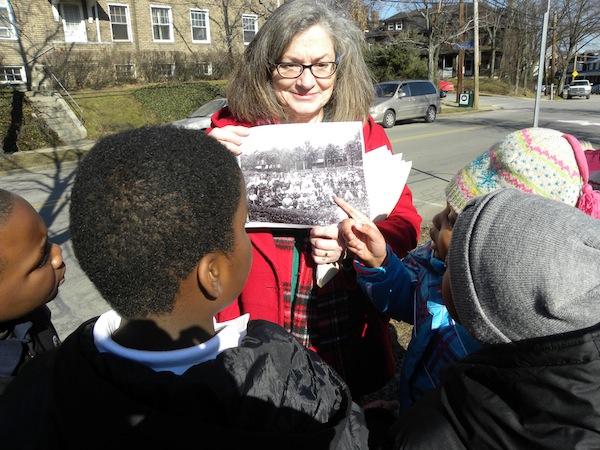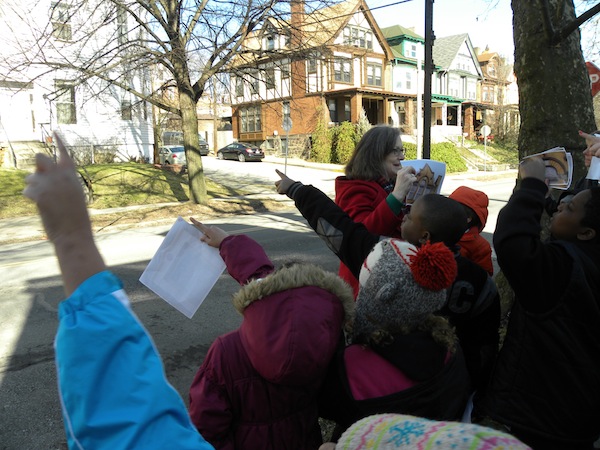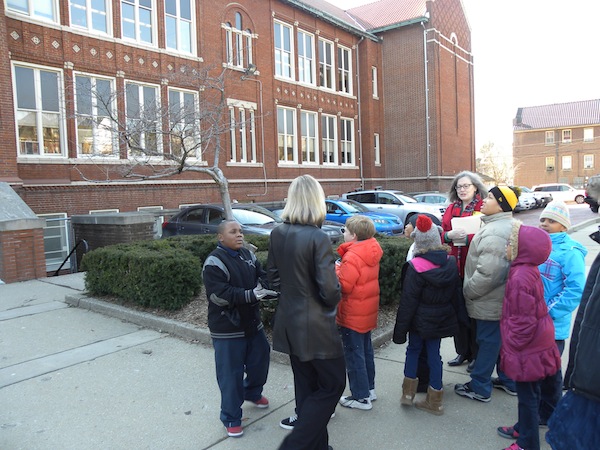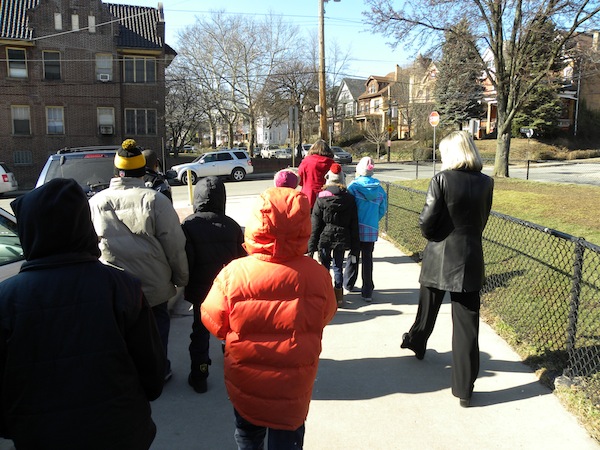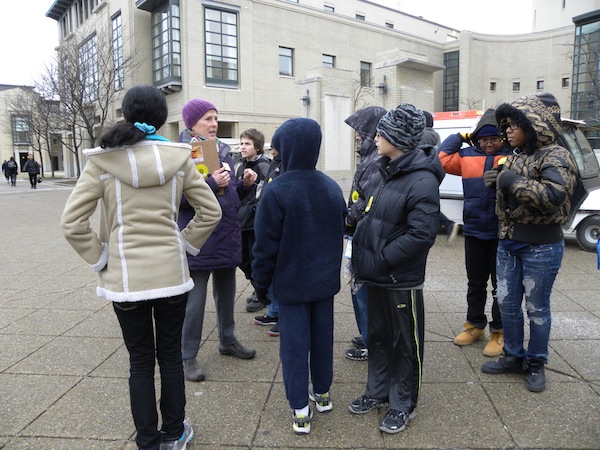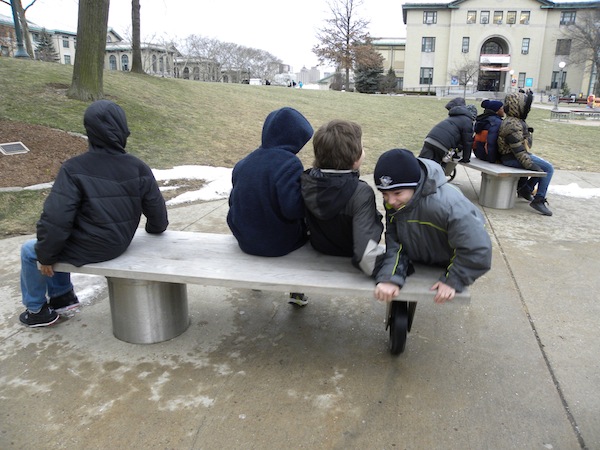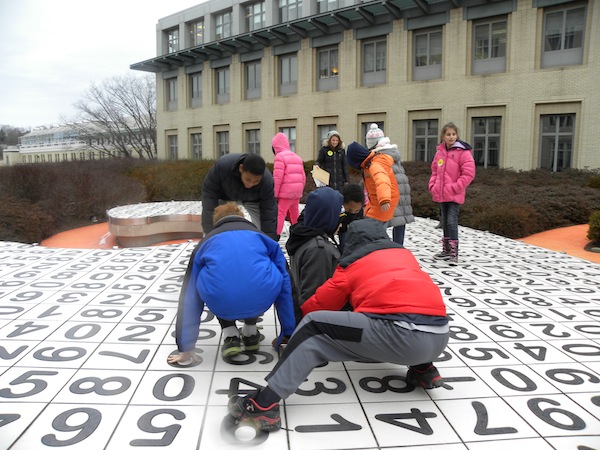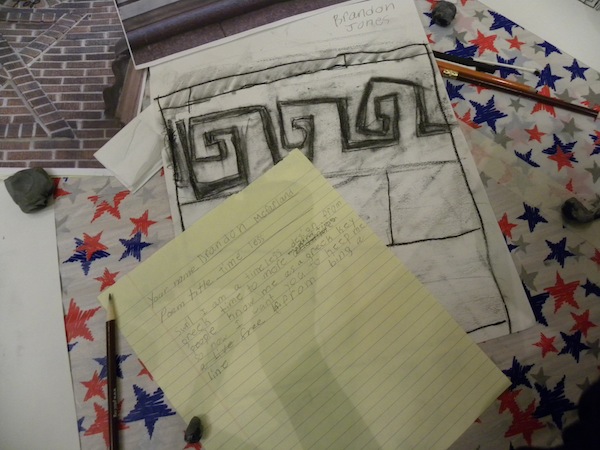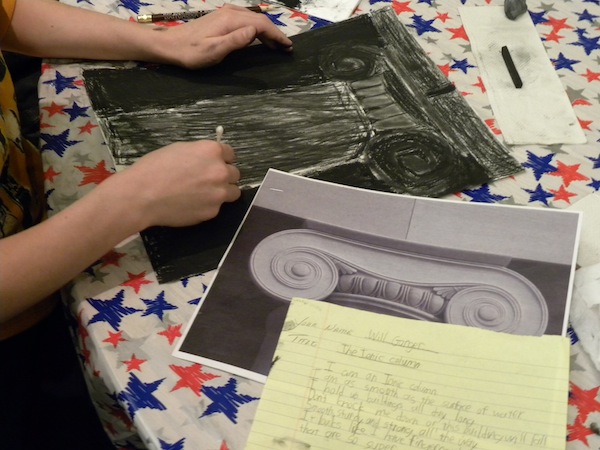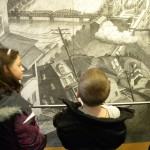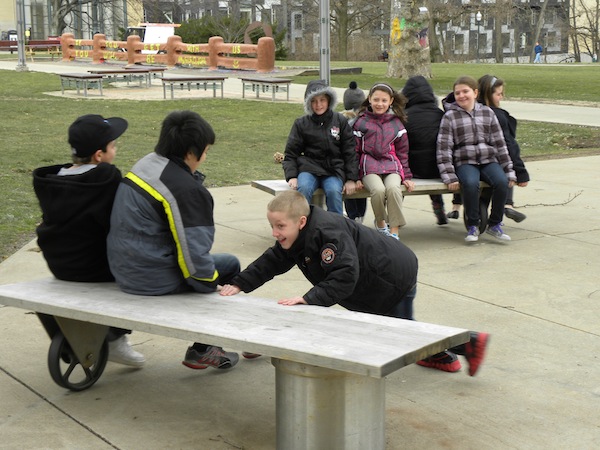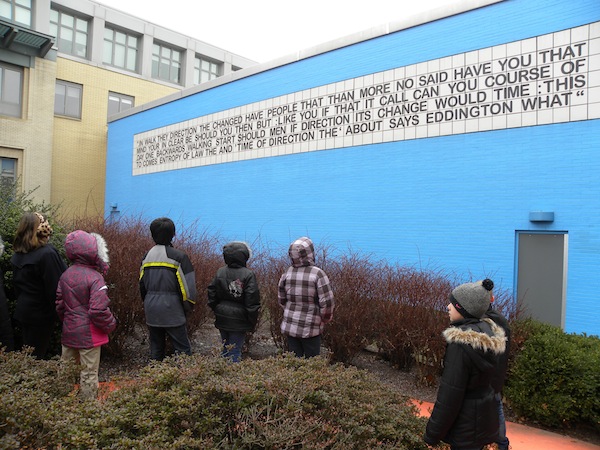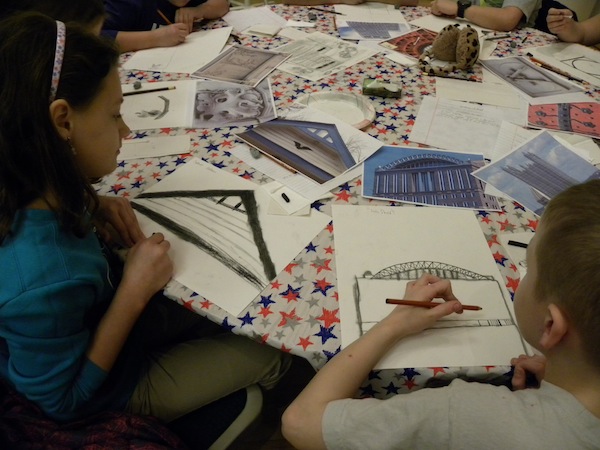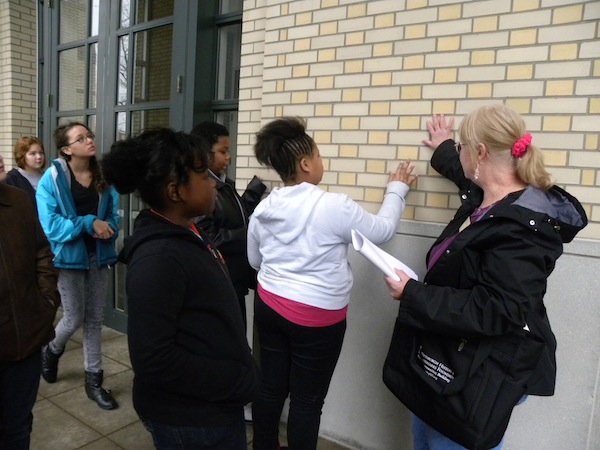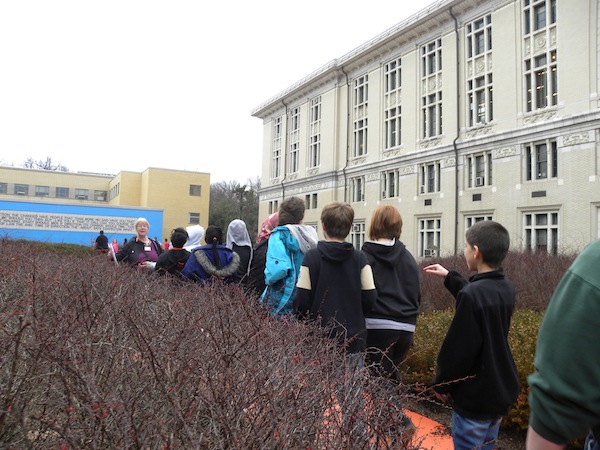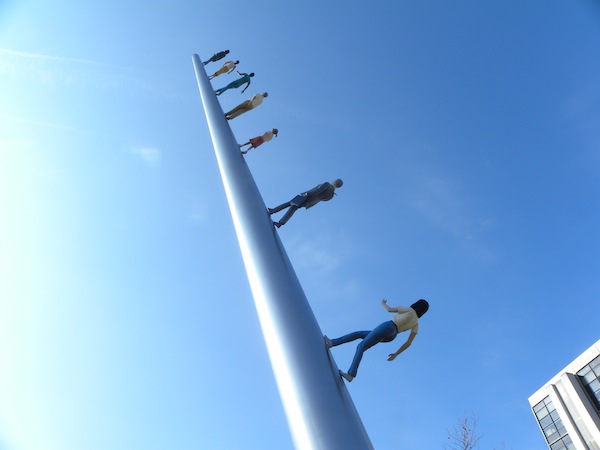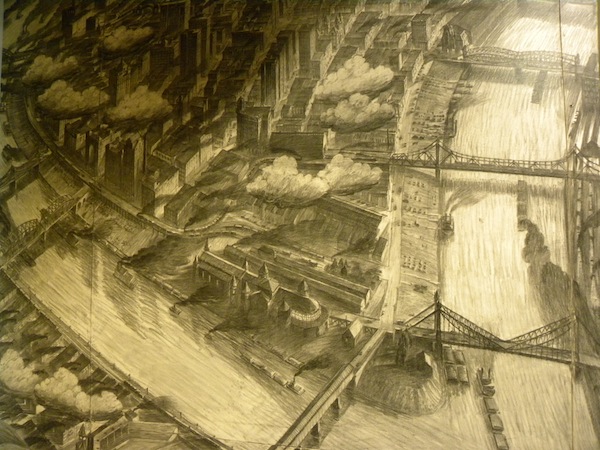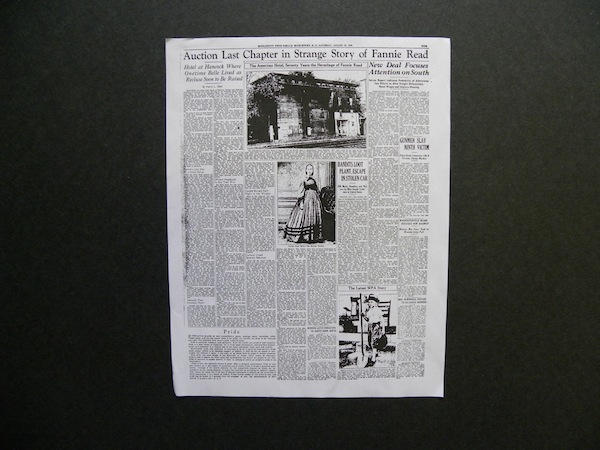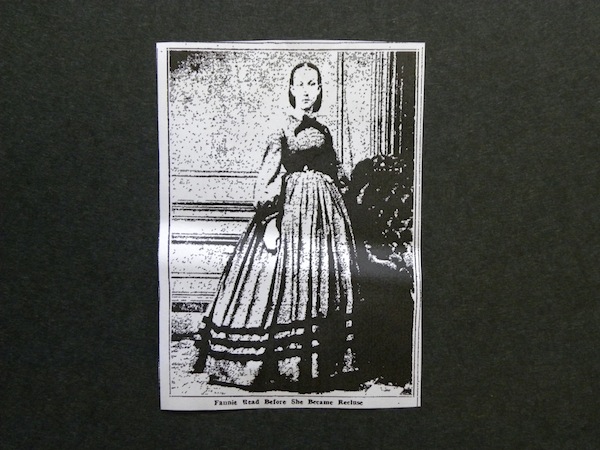
Category Archive: PHLF News
-
Building Pride/Building Character with PPS Students
Thanks to contributions from 11 corporations through the State’s Educational Improvement Tax Credit Program (EITC), PHLF is involving 12 Pittsburgh Public Schools in its “Building Pride/Building Character” program of field trips, art activities, and book-publishing projects this January through June.
In March, 60 students from Pittsburgh Perry High School participated in a college tour with PHLF; 150 students from Pittsburgh Phillips explored their neighborhood and created murals; and several students from Pittsburgh Banksville were invited by SLB Radio to read the poems they had written during a February field trip with PHLF.
We thank the following corporations for contributing to PHLF in 2012 through the EITC program: Huntington Bank, PNC Bank, BNY Mellon, Allegheny Technologies Incorporated, Frank B. Fuhrer Wholesale Company, ESB Bank, UPMC, Eat’n Park Hospitality Group, Inc., Hefren-Tillotson, Inc., Maher Duessel, CPA, and Bridges & Company, Inc.
-
Students Envision New Uses for North Side Lot
Twelve teams of middle school students from Westmoreland County and Pittsburgh’s Environmental Charter School presented their concepts for a vacant lot at 110 West North Avenue during PHLF’s 17th Annual Architectural Design Challenge on March 19. We thank interior designers Alisa Griffin and Sheri Kosh and architects Roger Hartung, David Morgan, Richard Schmitz, and Terry Walsh for critiquing the models and awarding the prizes.
“It’s absolutely amazing to see how creative and proud the students are and how inspirational their ideas are for helping to revitalize the North Side,” said Louise Sturgess of PHLF. “Each team spent many hours developing their concept, drawings, model, and oral and written reports. Their ideas were feasible and responded to the needs of the community.”
Funds from The Fine Foundation, McSwigan Family Foundation, and Alfred M. Oppenheimer Memorial Fund of The Pittsburgh Foundation help underwrite PHLF’s annual Architectural Design Challenge.
The first-place winners (from Harrold Middle School) envisioned The Western Pennsylvania Bridge Museum for the vacant lot, which could even be a National Bridge Museum since no bridge museum yet exists in the nation. Other groups envisioned a mixed-use building with retail, a restaurant, and cupcake-making center; a community center; a mixed-use building with a bike rental/sports store, clothing boutique, and apartments; an arts center; a “Dream, Do, and Live” community center with “healthy, fun activities”; a Global Foods grocery; a Pittsburgh Pastries bakery; a North Side youth center; a micro-creamery (making and serving ice cream and yogurt); a recreational center; and a cafe “to unite people in a relaxed environment.” Each group incorporated green-building elements, considered the historic context of the area, and convinced the judges that their concept would create pride in the neighborhood and draw more people to the North Side.
Wendover Team 2 won Second Place and the Student Award; Wendover Team 1 won Third Place. Honorable Mentions were awarded to West Hempfield, New Kensington Arnold Team 2, and Franklin Regional Team 1. The Environmental Charter School Team 1 won the Penguin Award for the most important lesson learned from a challenging situation.
“We thank all the teachers who involved their students in this design challenge,” said Karen Cahall of PHLF. “This experience strengthens math, art, research, writing, and speaking skills in particular, and gives students the chance to work together to solve real community problems,” she added.
Below is a photo gallery of the March 19 event, held in the Pittsburgh Children’s Museum.
-
Building Pride/Building Character with PPS Students
Thanks to contributions from 11 corporations through the State’s Educational Improvement Tax Credit Program (EITC), PHLF is involving 12 Pittsburgh Public Schools in its “Building Pride/Building Character” program of field trips and book-publishing projects this January through June.
Fourth-grade students from Pittsburgh Dilworth toured their school and neighborhood in February and will contribute their ideas and artwork to a book tentatively titled, Exploring Places: Connecting to the Real World.
Fifth-grade students from Pittsburgh Phillips, Banksville, and Colfax toured Carnegie Mellon University in January and February and developed their skills as explorers, artists, and poets.
Below is a photo gallery highlighting the tour of the neighborhood and Carnegie Mellon University.
We thank the following corporations for contributing to PHLF in 2012 through the EITC program: Huntington Bank, PNC Bank, BNY Mellon, Allegheny Technologies Incorporated, Frank B. Fuhrer Wholesale Company, ESB Bank, UPMC, Eat’n Park Hospitality Group, Inc., Hefren-Tillotson, Inc., Maher Duessel, CPA, and Bridges & Company, Inc.
-
PHLF Awards Grants to 11 Historic Religious Properties
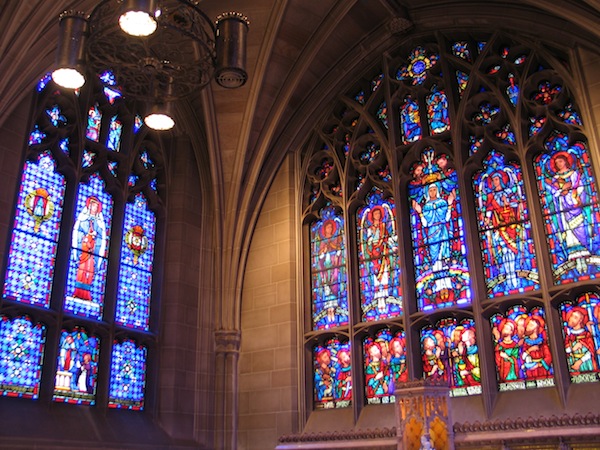 The Pittsburgh History & Landmarks Foundation (PHLF) has awarded $70,000 in grants and technical assistance to 15 congregations as part of its 2013 Historic Religious Properties (HRP) Grants program. The awards were announced at the annual awards ceremony held on February 28.
The Pittsburgh History & Landmarks Foundation (PHLF) has awarded $70,000 in grants and technical assistance to 15 congregations as part of its 2013 Historic Religious Properties (HRP) Grants program. The awards were announced at the annual awards ceremony held on February 28.The HRP Program is funded by gifts from PHLF members, trustees, and several private foundations. We thank all who contributed in 2012. Piloted in 1993 with an initial grant from The Allegheny Foundation, the program awarded its first full cycle of grants in 1997. After the 2013 grants are paid out, grant totals will exceed $935,000 and will have leveraged over $3.4 million in preservation projects.
“We’re very proud of this program! It provides important help—both financial and technical—to congregations throughout the region who want to preserve their worship sites,” said George Dorman, Committee chairman. “This is great and important work, and we heartily congratulate the congregations who are so committed to this marvelous effort.”
Eleven congregations received grants; four received technical assistance awards. Grants awarded this year included stained glass restoration, masonry work, roof and gutter repairs, exterior painting, and steeple repairs. Technical assistance was awarded to congregations to help prioritize restoration projects and establish preventive maintenance programs.
The following churches were awarded grants:
- Birmingham United Church of Christ, Carrick
- Bower Hill Community Church, Mt. Lebanon
- First Presbyterian Church of Pittsburgh, Downtown
- First Trinity Evangelical Lutheran Church, Oakland
- Glenshaw Presbyterian Church, Glenshaw
- Riverview United Presbyterian Church, Perry North/Observatory Hill
- Sacred Heart Church, Shadyside
- St. Andrew Lutheran Church, Shadyside
- St. Paul of the Cross Monastery, South Side Slopes
- St. Peter Church, Allegheny Center/North Side
- Valley Presbyterian Church, Findley Twp./Imperial
The following churches will receive technical assistance:
- Fairhaven United Methodist Church, Overbrook
- First United Methodist Church of McKeesport
- Sixth Presbyterian Church, Squirrel Hill
- Valley Presbyterian Church, Findley Twp./Imperial
Twenty-four applications for grants and technical assistance from historic religious institutions located throughout Allegheny County were reviewed this year and the requests for assistance totaled $179,000
The HRP Program assists architecturally-significant religious properties that are more than 50 years old, that have an active congregation, that provide social services in their communities, and are able to match the grant. Grants are to be used for exterior restoration projects on the main structure of the historic religious property.
-
Pittsburgh Terminal Warehouse Nears National Register Status
Click here for an announcement on the Pittsburgh Terminal Warehouse complex and its near completion of the process of getting listed on the National Register of Historic Places.
-
Fairbanks Feature: The Next Station Will Be . . . (the third and last in a series)
James D. Van Trump Library | Frank B. Fairbanks Transportation Archive | Fairbanks Features
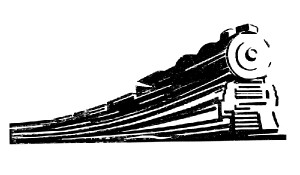 Showcasing a variety of materials located in the Frank B. Fairbanks Rail Transportation Archive
Showcasing a variety of materials located in the Frank B. Fairbanks Rail Transportation ArchiveNo. 17 Presentation
Fairbanks Feature: The Next Station Will Be . . . (the third and last in a series)
This feature in “A New Train of Thought” is the third and last in a three-part series highlighting the 13-volume series of The Next Station Will Be . . . , published by The Railroadians of America, Inc. (For the other two articles, please read Fairbanks Features 15 & 16.) Volume 7 is featured in this article: ERIE RR, PORT JERVIS, SUSQUEHANNA, and SCRANTON.
The 13-volume series was published mostly in the 1970s, from glass plate slides taken of railroad stations in 1910. These books are no longer in print and thus are getting very hard to find; some volumes are into the rare status. Frank Fairbanks donated most of the issues, and patron-donated funds made it possible to purchase the rest, when and if they came on the market. We were just recently able to complete the set.
The first two articles in this three-part series featured pictures of some of the old stations, mostly found in northern Pennsylvania and southern New York along the Erie Line. This article was inspired by a photo caption in Volume 7 that appeared under a large three-story wooden building at Hancock, New York. The caption read:
AMERICAN HOTEL at Hancock was noted for the tragic love story of Fannie Read (1845-1932) who lived her life in the building waiting seventy years for her lover, Lieutenant John Bellows, who never returned. Fanny never retired until the midnight train had departed.
This caption encourages the reader to find out more of the heart-breaking story––and more of the story can be found on the internet in old newspaper articles. For the complete story, come to the Fairbanks Archive to read all the details, but in brief, the story is as follows, according to the Middletown Times Herald (August 13,1938).
During the Civil War, the American Hotel was a stopping place for soldiers on their way to and from battle. The Delaware Regiment 101st Infantry group, along with others, was often there. Fannie was 18 to 20 years old, the popular and pretty piano-playing daughter of the hotel owner. Life was exciting with all these soldiers coming and going, and one stole her heart: John Bellows. Fannie’s father was many times very upset with these wild young men, who often did not pay their bills and caused other troubles.
When John became the love of Fannie’s life, her father was not at all pleased. Her father ordered this young officer out of the hotel, at which point Fannie locked herself in her room, where her father had ordered her to go, and she vowed never to leave it. She never did. For the next 70 years of her life (she lived to be 90, dying in 1932), Fannie waited each night at the window with a lighted candle, until the midnight train passed by, hoping John would disembark. He never did. She spent the last two years of her life at the Binghamton State Hospital in Binghamton, New York, not aware of where she was. Thankfully, she was also unaware of her home being razed and its contents sold at auction.
Visit the Archive to read the complete story––and to discover why the officer never returned.
Sometimes in the summer breeze you can still hear Fannie playing her rosewood piano.
The following illustrations from the Fairbanks Archive help document the story.
- The American Hotel in Hancock, in 1862, when the story began.
- Page five, Middletown Times Herald, August 13, 1938
- Enlargement of Hotel Auction notice, August 13, 1938
- Fannie Read before she became a recluse.
- Fannie’s Café today (in search engine, Fannie’s Café in Hancock, New York)
The Frank B. Fairbanks Rail Transportation Archive is open by appointment on Mondays, from 10:00 a.m. to 5:00 p.m. Use of the archive is free to PHLF members (one of the benefits!); non-members are assessed a $10 use fee.
The Archive is located on the fourth floor of The Landmarks Building at Station Square, in the offices of the Pittsburgh History & Landmarks Foundation.
To schedule an appointment, email the Librarian James Halttunen: James@phlf.org
-
Charitable IRA Rollover a great way to support PHLF’s mission
If you’re age 70½ or older, you may be able to take advantage of an important tax incentive that would allow you to support PHLF in a more cost-effective way.
Congress just re-authorized for 2013 a tax provision that allows individuals to make gifts of up to $100,000 per year from their IRA accounts to one or more charities, without first incurring income tax on the withdrawal. It’s called the Charitable IRA Rollover.
This means that you can direct up to that amount to PHLF with no federal income tax liability. The Charitable IRA Rollover may provide you with an excellent opportunity to make a gift during your lifetime from an asset that would be subject to multiple levels of taxation if it remained in your taxable estate.
Now, there are some details and restrictions:
- You must be 70½ or older when you make your gift, and the gift must be made from an IRA; no other retirement plans (such as 401k, 403b or SEP accounts) qualify.
- Your gift must come to PHLF outright; it can’t be used to establish a life-income arrangement or support one of our Named Funds, but it does count toward your minimum required distribution.
- Although the distribution will be free from income tax, it will not generate an income tax charitable deduction.
- There are other details which we will be happy to guide you through.
If you’d like to make a 2013 IRA rollover gift, you need only direct your IRA plan provider to make a distribution to PHLF. If you have any questions, feel free to contact our planned giving office at 412-471-5808, ext. 538 or plannedgiving@phlf.org.
-
Beechwood Boulevard (Greenfield) Bridge to Be Replaced
The first public meeting was held on January 16 outlining the City’s plans to replace the concrete-arch bridge, connecting Greenfield Avenue with Schenley Park, with a steel arch. The Beechwood Boulevard Bridge, also called the Greenfield Bridge, was designed in 1921-23 by Charles M. Reppert, chief engineer, and Stanley L. Roush, architect. It was altered in 1980, and much of the decoration on the once-ornate bridge, including a grand series of sculpted lamp standards and urns, was removed.
The City plans to keep and restore the entrance pylons and remaining parapets and urns alongside the abutments. Furthermore, the City is going to replicate the original parapets and urns across the new structure. To the people crossing the bridge on Beechwood Boulevard and Greenfield Road, the replacement bridge will look more historically accurate than the current structure (after its 1980 rehabilitation).
In the 1910s and 1920s, seven ‘City Beautiful’ open-spandrel concrete arch bridges were constructed by the City of Pittsburgh: McArdle Roadway, Murray Avenue, Beechwood Boulevard, Baum Boulevard, Heth’s Run, Larimer Avenue, and Meadow Avenue. With the upcoming replacement of the Beechwood Boulevard Bridge and the Heth’s Run Bridge, only the Larimer Avenue Bridge and part of the Meadow Avenue Bridge will remain. (A new steel bridge was constructed on the Meadow Avenue Bridge’s original concrete arch ring).
The Beechwood Boulevard (Greenfield) Bridge is featured in Pittsburgh’s Bridges: Architecture and Engineering, by Walter C. Kidney (PHLF 1999). Click here for details and scroll down to “Hardcover books.”

